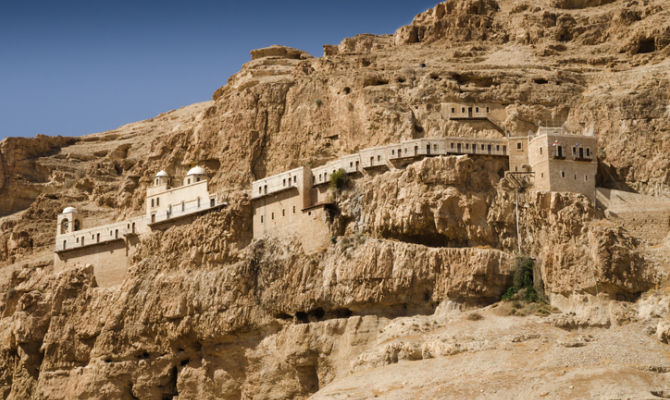L'Era Pre-Christian: Palestine

The terra in Canaan (o Palestine) it is a geographic region that has never had precise borders. We can place this land at the center of the Fertile Crescent, that is, of what was once considered the most fertile area in the then known world..
The Bible defines this as a land “where milk and honey flow”, meaning by this the great abundance of food that must have once been. To understand this expression we must remember that the ancients, since they could not rely on technical means, they spent most of their day working to increase agricultural production and thus ensure the survival of the family.
This land, given the presence of water, it's a place where you have to work hard, but survival is assured. Yet if someone, accustomed to the landscapes of his region, he went to Palestine, he would not have the impression of being in a very hospitable land, given that the deserts are quite extensive and that the climate (especially in summer) it is very dry, enough to prove almost hostile. Instead this territory, always cultivated, it is rich in water, flora and fauna.
The land of Canaan has an almost trapezoidal shape and is cut lengthwise from the Jordan River, which is also its most marked feature.
Those who think of Palestine in fact cannot help but remember the Jordan River, where Jesus was baptized by John. The Jordan originates from Mount Hermon and flows into a very wide and deep valley, which is located below sea level. This valley, called the Jordan valley, it becomes deeper as the river approaches Lake Gennesaret and the Dead Sea, where it is permanently lost. Plains are rare in Palestine: few rivers and almost all torrential, while water is readily available by digging artesian wells.
Most of the territory is made up of mountains and hills. The coast, low or sandy, it does not offer natural shelters to accommodate ships: for this reason, the populations that have gradually settled in the region have not dedicated themselves to seafaring activities, but rather to agriculture, to pastoralism, to land trade.
At the north end of the region, the coast becomes high and rocky, at Mount Carmel and continuing towards the lands of Lebanon.
To the ancients, however, the land of Canaan must have seemed a decidedly hospitable place, and it was in fact inhabited since ancient times.
The climate is Mediterranean along the coasts (with hot summers and very mild winters), temperate in the lands east and west of the Jordan, while along the river (that is, in correspondence with the deep depression of the Jordan itself) it is torrid type.
Geographical features allow us to divide Palestine into three regions: the Galilee, Samaria, Judea.
The cities of Galilee were once very important; among these we remember the rich Megiddo, Jezreel, Beth-Shean, Hazor, And, and south Capernao lake, Bethsaida, and later Tiberias. Many of these names are mentioned in both the Old and New Testaments. Today the most important centers are: Haifa (the port on the Mediterranean), Acco, Nazareth (almost in the center) and modern Tiberias.
The Jordan River
![River-Jordan-08[1]](http://www.veritadellabibbia.net/wp-content/uploads/2015/09/Fiume-Giordano-081.jpg)
Terra in Canaan
![travel[1]](http://www.veritadellabibbia.net/wp-content/uploads/2015/09/viaggioa1.jpg)
Basilica di Cana![Basilica-of-Cana 1[1]](http://www.veritadellabibbia.net/wp-content/uploads/2015/09/Basilica-di-Cana11.jpg)